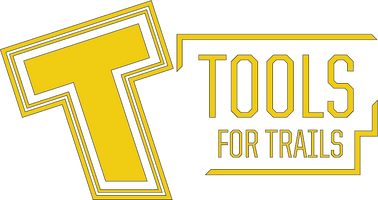Why Hasn't the GAOA Been Funded Yet?

We celebrated and wrote about the Great American Outdoors Act being passed and signed earlier this year. It was a momentous occasion for us, and all outdoor recreationists, dirt lovers, and trail builders.
However, despite our initial celebrations, the GAOA is yet to actually be funded or take effect. We investigated why this was the case.
What Is GAOA?
To catch anyone out of the loop up, the Great American Outdoors Act (GAOA), is a bill passed by Congress, signed by President Trump, and activated into Public Law in 2020.
It serves two main purposes. First, to permanently fund the Land and Water Conservation Fund to the tune of $900 million a year. Second, to provide an additional $9.5 billion fund spread over five years to help address the maintenance backlog at national parks.
The bill enjoyed rare bipartisan support and passed on July 22 of this year, before being signed into law by the President on August 4th.
The legislation aims to improve facilities and infrastructures at America’s national parks, forests, and recreation areas. This is great news for the 327 million visitors a year to America’s national parks. The bill will additionally provide funds to American Native Indian Schools.
The bill was passed to address the expiration of the Land and Water Conservation Fund (LWCF). The LWCF was only approved for 50 years and the $900 million agreement expired in 2015. A temporary bill was in place to attempt to address this, but the GAOA is a more permanent solution to address funding needs.
How is GAOA Funded?
Similar to the LWCF, GAOA is funded by energy development. This means energy corporations who use natural resources pay royalties. These funds are then redistributed back to conservation efforts.
This includes corporations drilling for oil and natural gases, both in the United States and offshore in the Outer Continental Shelf. It’s a great way for these companies that use natural resources for financial gain to pay back into the preservation of wildlife.
It also means despite being able to reap the rewards of better preserved national parks, American residents are not paying higher taxes to do so.
The GAOA additionally addresses the backlog issue in a way that the LWCF failed to do so. LWCF funds were often wrongly allocated to make up for funding deficiencies in other areas. This led to the huge, and expensive, backlog of maintenance that so severely needs addressing within national parks. The GAOA attempts to ensure these funds are available only for these purposes.
Problems with GAOA
Though the GAOA provides some certainty and a much-needed influx of cash, it isn’t without its problems.
The source of funding is controversial, particularly with environmental activists. The new maintenance program in particular uses funds from fossil fuel development on American soil and waters. These developments threaten the lands the GAOA attempts to protect.
It’s a tradeoff in a sense, that the corporations which damage the lands must pay back into it. But many think it isn’t a fair trade. This is because many think that energy corporations do more than their fair share of damage to the planet.
Currently, fossil fuels account for a quarter of US carbon emissions. There are calls for new oil and gas developments to be stopped to address climate change. If this is reduced over time, then the GAOA funding isn’t sustainable.
This said, for the time being, the source of funding provides a short-term solution, particularly regarding the maintenance backlog.
Why the Delay?
A lot of people, not least us, have been wondering what’s happening with the GAOA for 2020. It was brought into effect months ago and yet very little has been heard about its progress since.
As with all bureaucracy, much of this comes down to the time involved in the decision-making process. After the GAOA was signed into law back in August, the decisions were passed onto the Forest Service. The department spent many weeks looking at project proposals from national parks and forests across the country.
This was compounded by the fact that due to the maintenance backlog, there are a huge amount of projects that desperately need funding. For example, Yosemite National Park alone needs almost $645 million to help with its maintenance backlog. Combined with the National Mall and Memorial Parks backlog maintenance estimate of $655 million, these three spots could take up the first annual installment from GAOA easily.
Despite the pressure on the department, they did their due diligence in attempting to spread costs evenly and fairly. The Forest Service analyzed project proposals based on various criteria including reducing deferred maintenance, improving visitor experience and access, and contributing to rural economic development to name just a few.
Just a couple of weeks ago, on the 2nd of November, the Forest Service announced they had finished reviewing project proposals. They’d identified more than 550 ready to go priority projects to initially begin work on.
Though priority projects have been identified, work is unlikely to begin before 2021. This is because GAOA doesn’t actually receive funding until the beginning of the 2021 fiscal year. This said the project list breakdown has now been published in full on the agency’s website.
Included within the lists are the deferred maintenance projects, as well as the LWCF Legacy projects to be completed in 2021.
Here’s to 2021
With 2021 on the horizon now, the future of America’s national parks seems to be much more certain than it was in 2015 thanks to GAOA. It's a relief for all outdoor recreationists, including Tools for Trails. You can find out more about our story on our site, as well as loads more information about all things outdoors on our blog.




Comments